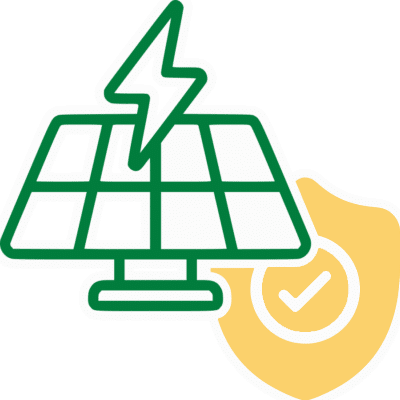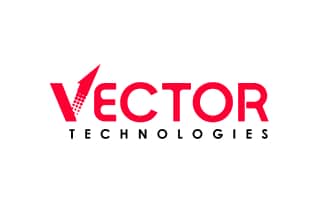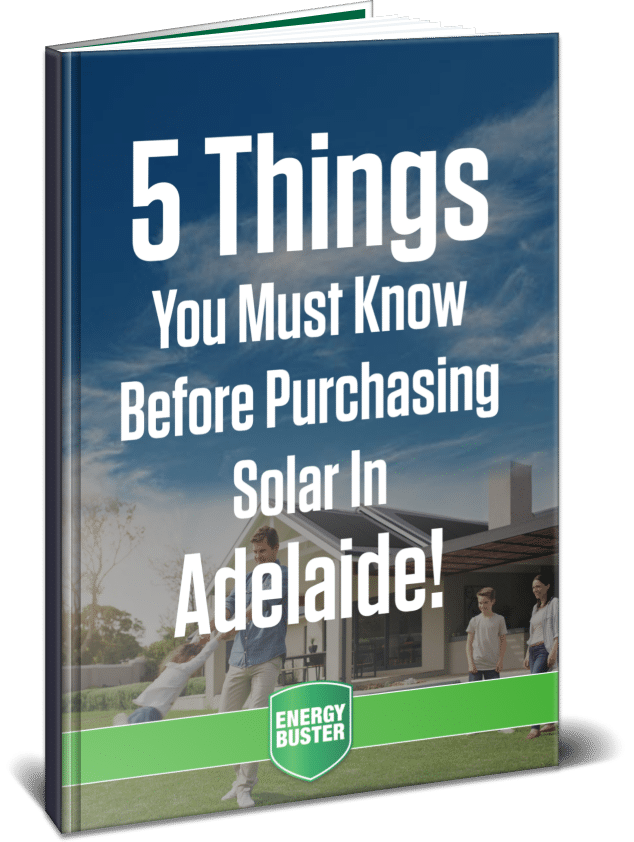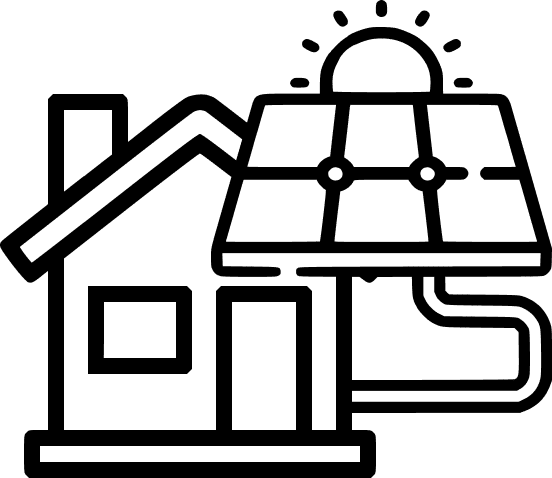
The patented technology used in our solar panels ensures maximized efficiency – even in low light – which means greater savings for our clients year round.

Research shows consumers are 100 times more likely to return a standard panel over a SunPower Panel, a testament to their quality.

The most comprehensive warranties available on the Australian market, with a full 40 Year Warranty and no hidden fine print.
Solar Systems
Experience Unmatched Cost Savings with Elite 20kW Solar Systems Adelaide
Did you know a 20kW solar system can save you potentially up to $8,000 per year?
Heavily suited to commercial establishments, a 20kW system is a heavy-duty option able to provide significant independence from the grid whether you’re looking for a solution for your business or a larger-sized household.
With a capacity of 20,000 watts, this system can generate substantial energy to offset your electricity consumption. The system typically consists of high-quality panels, an inverter, mounting equipment, and professional installation.
By harnessing the abundant sunlight in Adelaide, you can significantly reduce your reliance on the grid, lower your energy bills, and contribute to a greener environment.
Upgrade to sustainable energy with our comprehensive solar panel packages, tailored for efficiency and cost savings.
Let Energy Buster help you invest in renewable energy in Adelaide today and enjoy the long-term benefits of clean, renewable energy.
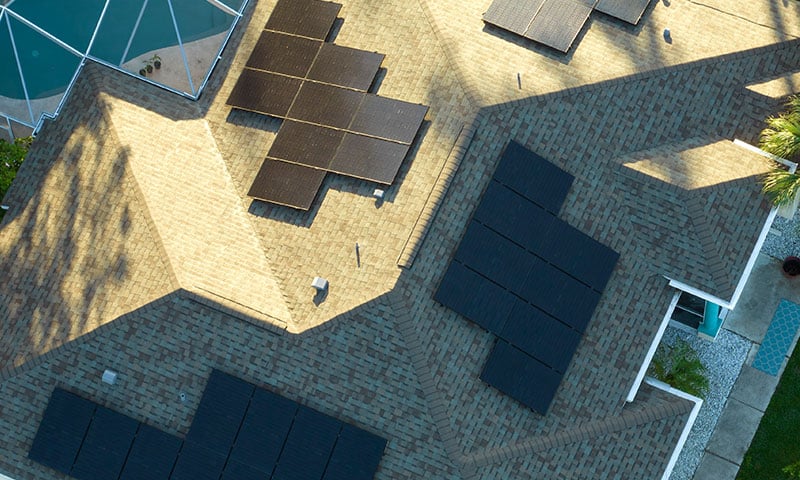
What are the best types of 20kW solar systems?
In Adelaide, the best types depend on several factors, including your specific needs, budget, and site conditions. Here are some popular options:
Monocrystalline panels: Monocrystalline panels are known for their high efficiency and sleek black appearance. They are made from a single crystal structure, resulting in better performance in low-light conditions. Monocrystalline panels are a reliable choice for maximising energy production in a 20 kW system.
String inverter systems: String inverters are a common choice.. They connect multiple panels in series to a single inverter, converting DC power to AC power. These solar inverter solutions are cost-effective and offer efficient energy conversion, making them suitable for larger systems.
Microinverter systems: Microinverters are an alternative to string inverters. Unlike string inverters, microinverters are installed on each individual panel, converting DC power to AC power at the panel level. This setup allows for better monitoring and optimisation of energy production, especially in scenarios with shading or varying panel orientations.
Hybrid systems: If you’re interested in adding energy storage capabilities, consider a hybrid system. These systems combine panels with battery storage, allowing you to store excess energy for use during periods of low generation or grid outages. Hybrid systems provide increased self-consumption and energy independence.
High-quality mounting equipment: To ensure the longevity and efficiency of your system, opt for high-quality mounting equipment. This includes robust racking systems or ground-mount structures that securely hold the panels in place, withstanding the elements and providing optimal tilt and orientation for maximum sunlight exposure.
How much does a 20kW solar system cost?
The cost of a robust 20kW solar system in Adelaide can vary depending on several factors, including the quality of components, installation complexity, and any additional features or services.
On average, you can expect the cost to range between $25,000 and $35,000.
It’s important to note that this estimate is a general range, and actual prices may differ based on individual circumstances and market conditions. To get an accurate quote for your specific requirements, get in touch with a member of the Energy Buster team. We’ll assess your site, discuss your energy needs, and provide you with a customised quote tailored to your situation.
Energy Buster Tip: Investing in renewable energy offers long-term financial benefits through reduced electricity bills and potential government incentives, such as rebates or feed-in tariffs. It’s a worthwhile investment that can lead to significant savings over the system’s lifespan, typically around 20 to 25 years.
20kW solar system benefits
✔ Significant energy savings: It can generate a substantial amount of electricity, allowing you to offset a significant portion of your energy consumption. This can result in reduced electricity bills, saving you money in the long run.
✔ Environmental sustainability: By harnessing renewable energy, you reduce your reliance on fossil fuels and contribute to a cleaner, greener environment. Solar power is a renewable energy source that produces clean electricity and helps lower greenhouse gas emissions.
✔ Potential revenue generation: In Adelaide, excess energy generated by your 20 kW system can be fed back into the grid through a process called net metering or feed-in tariffs. This can earn you credits or payments for the surplus electricity you supply, potentially resulting in additional income.
✔ Long-term investment: These systems typically have a lifespan of 20 to 25 years. Investing in a 20 kW system provides a long-term solution for sustainable energy production, offering a reliable source of electricity and potential financial returns over its lifetime.
✔ Increasing property value: The installations are known to increase the value of properties. The presence of the system can make your Adelaide property more attractive to potential buyers, as they see it as an energy-efficient and cost-saving feature.
✔ Government incentives: Depending on the current policies and regulations, you may be eligible for various government incentives such as rebates, tax credits, or grants. These incentives can further reduce the initial cost.
What is the installation process for a 20kW solar system?
The installation process for a 20kW solar system in Adelaide typically involves the following steps:
Step One: Consultation and Assessment
The installers will visit your property to assess its suitability for the installation. They will evaluate factors such as roof orientation, shading, structural integrity, and available space to determine the optimal design and placement of the solar panels.
Step Two: System Design and Proposal
Based on the site assessment, the installer will create a system design that includes the layout of the panels, inverter placement, and electrical wiring. They will provide you with a detailed proposal outlining the components, cost, and expected energy generation.
Step Three: Obtaining Permits and Approvals
Before installation, the installer will help you navigate the paperwork and obtain any required permits or approvals from local authorities, such as building permits or grid connection agreements.
Step Four: Delivery
Once you accept the proposal, the installer will procure the panels, inverters, mounting equipment, and other necessary components. These will be delivered to your property on the scheduled installation day.
Step Five: Installation and Wiring
On the installation day, the installers will mount the panels on your roof or ground-mounted system according to the approved design. They will connect the panels using appropriate racking systems and install the inverters, wiring, and electrical connections.
Step Six: Grid Connection and Testing
After the physical installation, the system will be connected to your property’s electrical grid. The installers will conduct thorough testing to ensure the system is functioning properly, checking for any potential issues or discrepancies.
Step Seven: Commissioning and Monitoring
Once the system passes all the necessary tests, it will be commissioned, and you will be provided with instructions on how to monitor its performance and energy generation. The installer may also set up any necessary monitoring systems or online portals for you to track the system’s output.
Step Eight: Handover and Documentation
The installer will provide you with all relevant documentation, including warranties, product manuals, and information on maintenance and warranty procedures. They will also address any final questions or concerns you may have.







